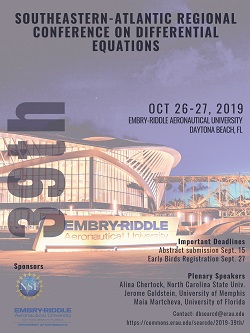Institution
Florida A & M University
Abstract
Source problems play an important and unique role in PDEs. More specifically, inverse source scattering problem arises in many areas of science. It has numerous applications to medical imaging and geophysics, acoustical and bio-medical industries, antenna synthesis, and material science. In particular, inverse source problem seeks the radiating source which produces the measured wave field. This research aims to provide a technique for recovering the source function of the Helmholtz equation and some classical system of PDEs from boundary data at multiple wave numbers when the source is compactly supported in an arbitrary bounded C^2 boundary domain, establish uniqueness for the source from the Cauchy data on any open non empty part of the boundary for arbitrary positive K, and increasing stability when wave number K is getting large for a 2 and 3 dimensional general domain. Various studies showed that the uniqueness can be regained by taking multifrequency boundary measurement in a non-empty frequency interval (0,K).
Inverse Source Problems for Wave Propagation
Source problems play an important and unique role in PDEs. More specifically, inverse source scattering problem arises in many areas of science. It has numerous applications to medical imaging and geophysics, acoustical and bio-medical industries, antenna synthesis, and material science. In particular, inverse source problem seeks the radiating source which produces the measured wave field. This research aims to provide a technique for recovering the source function of the Helmholtz equation and some classical system of PDEs from boundary data at multiple wave numbers when the source is compactly supported in an arbitrary bounded C^2 boundary domain, establish uniqueness for the source from the Cauchy data on any open non empty part of the boundary for arbitrary positive K, and increasing stability when wave number K is getting large for a 2 and 3 dimensional general domain. Various studies showed that the uniqueness can be regained by taking multifrequency boundary measurement in a non-empty frequency interval (0,K).


Comments
View Parallel Session